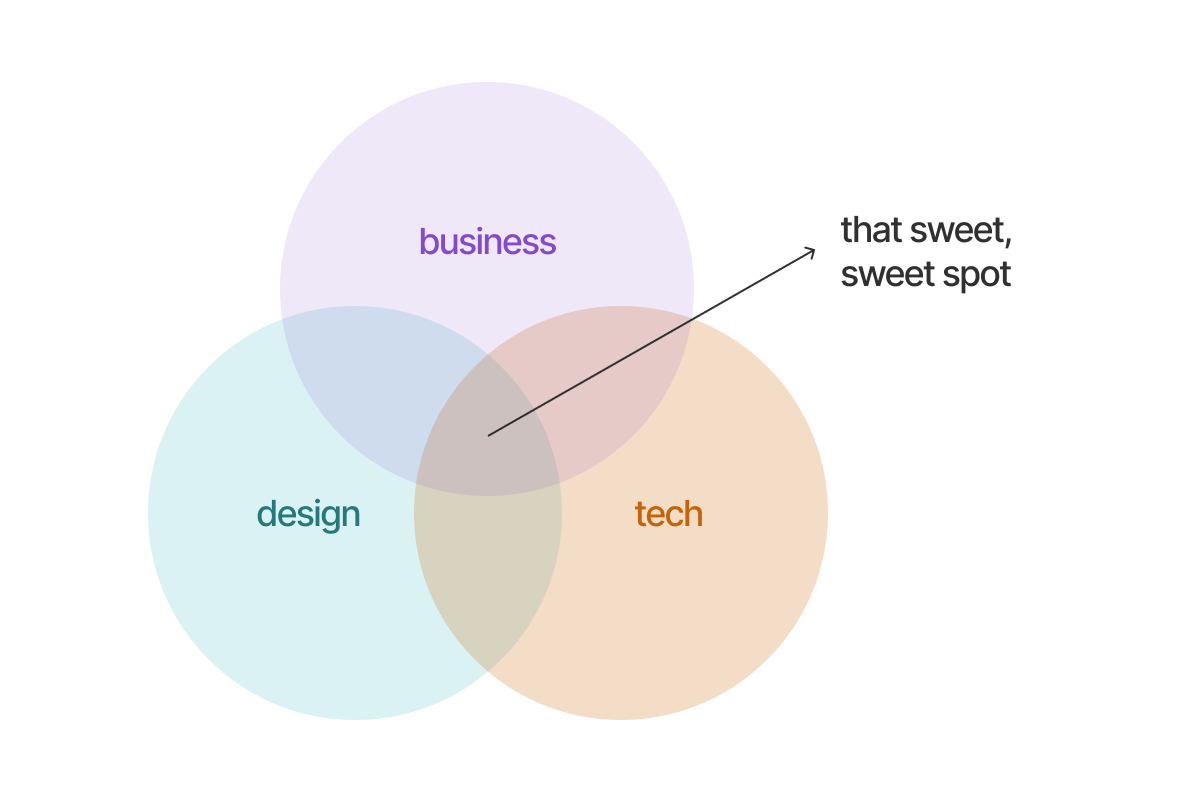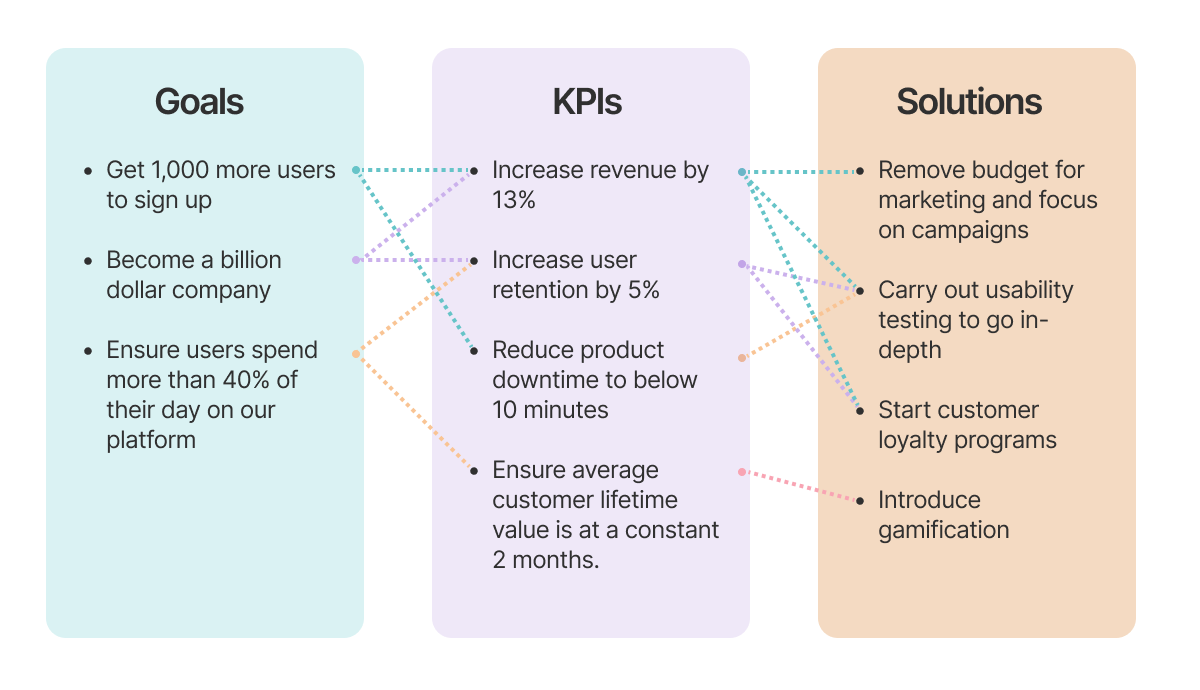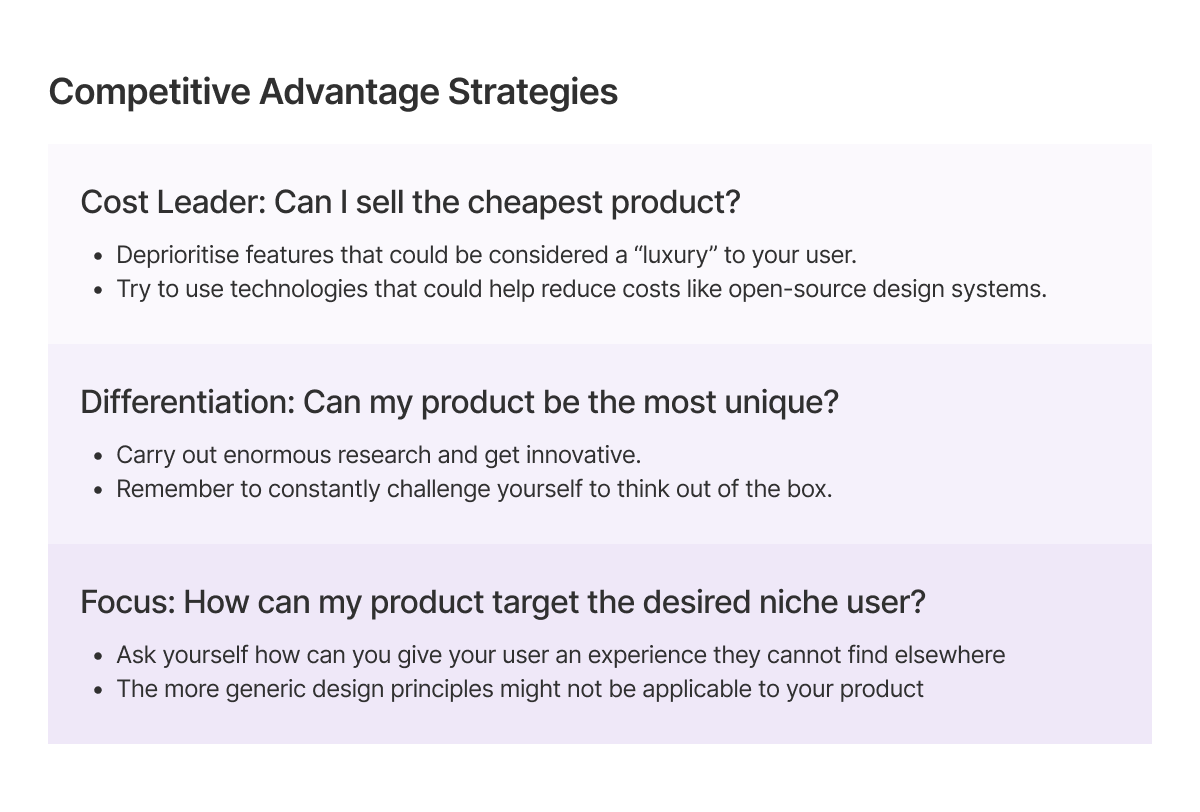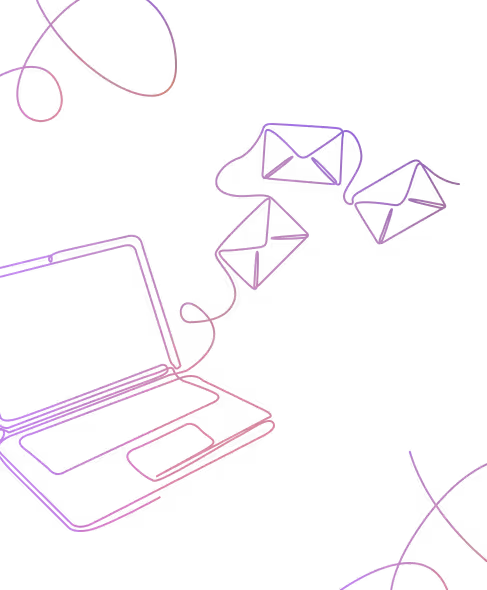Product design acts as a bridge between the go-to-market strategy and users' needs. As designers, it's our responsibility to ensure that we cater to the requirements of both the user and the business. To achieve this, we must collaborate and communicate effectively with stakeholders and consider their perspectives. In an increasingly competitive market, design teams must find innovative ways to create value and differentiate their products.
Working with a design team at Wednesday has allowed me to broaden my outlook and understand the value of making business-oriented decisions in the design process. We aim to provide our customers with a seamless experience building digital products that will last the test of time. One of the key ways we ensure we are building products that make an impact is by aligning all our mindsets towards better-serving business goals.
It is no longer about just designing a product; we are designing success, we are designing culture, and we are designing the future. One of the biggest jumps a design team can strive to make is moving beyond aesthetic, creative designs to thinking in a way where design collaborates meticulously in strategic decision-making.

Talk about the things that matter.
As product designers, user advocacy is at the forefront of our work. Creating successful experiences for users is a source of pride and joy. However, the product journey is long and dark, and the destination is far.
Don Norman, the legend of product design, says,
Finally, people have to actually purchase it (the product). It doesn’t matter how good a product is if, in the end, nobody uses it.
The equation is simple; if the users are happy, the product works, and if the product works, the business is happy. To bring that balance, as product designers, we strive to learn as much about the business context and its objectives as possible and try to solve those problems. We view the business goals as an essential part of the design process and ensure all our design decisions aid the business and the user.
At Wednesday while documenting any project overview, we list down the ‘Business KPIs’ next to the ‘Goals’. Key Performance Indicators or KPIs are data points that help a business understand if its products are performing as they should. For example, a KPI for a newly launched fintech product could be the percentage of users who come to the landing page and sign up for the waiting list. The goal for the business could be to increase that percentage by 5% for the next quarter. Now as a designer, it is our job to come up with the right solution!

Get business savvy!
To walk the walk, one must talk the talk. A basic understanding of how businesses work, what forces drive them, and what metrics can be used to track success or failure is essential in helping develop more of a business thinking mindset while designing. While most of us have already heard and might have even used these concepts while working, let’s drill down into one of my favorites:
Competitive advantage
A competitive advantage is a condition or circumstance that helps put a product or company in a superior business position relative to others in the market. As designers, one of the core aspects of the job is to make sure our product is unique and fills the market void. There are many generic strategies used to gain a competitive advantage.
When dealing with a new project at Wednesday we start by defining the type used for a product. This helps us align the design process accordingly. Let’s go through some of the most common strategies below:
1. Cost leader
This approach focuses on selling the product for the cheapest among competitors, thus directly increasing the user base. For a product to become a cost leader:
- We deprioritize features that could be considered a “luxury” to the user.
- Use technologies that could help reduce costs, like open-source design systems.
2. Differentiation
This strategy focuses on creating a product and providing unique solutions that put you in a better position than your competitors. As designers, we would:
- Carry out enormous research and get innovative. Maybe run a Crazy-8 workshop.
- Remember to challenge ourselves to think out of the box constantly.
3. Focus
While all products want to be marketable to a wider target audience, using this approach tends to drill down to the niche audience. It focuses more on brand loyalty and creating bonds with the user. If this is the strategy the product is aiming for:
- We ask ourselves how we can give our users an experience they cannot find elsewhere
- The more generic design principles might not apply to this product

Enjoying this article? Don't miss out on more exclusive insights and real-life digital product stories at LeadReads. Read by Top C Execs.
Join here.
Communication is key to a happy product design journey.
To demonstrate the value of design thinking, it is essential to keep all the stakeholders involved. At Wednesday, we keep the communication with all stakeholders free-flowing. From the kick-off call to our weekly product review calls, the goal is to get everyone on the same page and ensure we’re all working towards the product's success.
Some ways we can maintain this is by:
1. Structured workshops
- There are a plethora of workshops to help get everyone in gear. Just like products keep reiterating, communication should too.
- We set up workshops with stakeholders at the beginning of the project to get the ball rolling and understand the overall product vision, mission, and key objectives. This helps set the base for all our design decisions going forward.
- We don’t stop there. Once a quarter, we host workshops to understand the current scenario and what the near future looks like. This helps prioritize and align business and design goals.
To learn more about the different types of workshops and which would be most appropriate for you, check out Pipdecks.
2. No-agenda calls
Sometimes, no structure is good for productivity and fruitful conversation. We set up no-agenda calls every two weeks with stakeholders and use this time to free-ball ideas, get feedback, and think of better ways to help the product succeed (these might not always be design-related ideas).

The future is not as far as you think…
After a product launch, the focus shifts to scaling and growth. As product designers, addressing immediate business needs is a top priority. However, the Wednesday design team also prioritizes future-proofing their designs to ensure their products have longevity and relevance.
Designing for scalability
As a product evolves, the goal is always to reduce time to market while invariably improving the overall product experience. To be able to provide a seamless design journey that helps the product evolve without the need to start from scratch, a stable design ecosystem is required.
To design for scale, some core principles we follow at Wednesday are:
- Use of detailed design systems with reusable components. This ensures consistency and saves a lot of time and resources.
- Accounting for extensive searching and filtering mechanisms. As the product scales, so will the data displayed on the screen. Ease of navigation is fundamental for a great user experience.
- Designing for all use cases from the start! Sometimes it may seem unnecessary to account for all the flows, but there must be no surprises in the product flow for seamless scalability.
Designing to stay relevant
As technology continues to evolve rapidly, it's essential to stay up-to-date with the latest design trends and market developments. This not only helps ensure that the designs remain relevant and fresh, but it also allows for making strategic changes that can improve digital products and meet the changing needs of businesses. By staying up-to-date and being flexible, we ensure that products remain competitive and meet the demands of the market. By keeping an open mind and a willingness to adapt, we help businesses stay ahead of the curve and thrive in today's fast-paced digital landscape.
Never forget your users!
A discussion on product design would be incomplete without considering the user. User-centered design plays a crucial role in unifying the entire product and ensuring it meets the needs and preferences of the target audience. This leads to a better user experience, increased customer satisfaction, and loyalty.
As designers, we are constantly on the cusp of between the needs of the user and the needs of the business. Focusing solely on the business's needs may result in a cost-effective product, but to achieve the perfect balance, it's crucial to consider both the business's and the user's requirements. Here are some ways we try to achieve that balance:
- Research- Carrying out detailed research and gathering legitimate data points on user behavior, needs, etc. This helps us build a strong foundation on which to base our future design decisions.
- Collaborate- We work closely with stakeholders like project managers and business owners to understand their goals and objectives. Having open and honest conversations gets everyone on the same path.
- Prioritise- Identifying the most important user and business requirements and prioritizing them is crucial. Weighing the cost against value and efforts against time is a great way to gauge the importance of needs.
A Prioritisation Matrix can helps determine the immediate requirements that will give the most value with the least amount of risks. Learn more here.

With great power comes great responsibility.
An effective product designer must always begin each project by comprehending a task, its significance to the business, and how it aligns with larger business objectives. It's the designer's responsibility to create successful user-focused products while effectively communicating the importance of these decisions to stakeholders.
At Wednesday we believe in taking a proactive approach, delving into the business context, and understanding the relationship and interdependence between user needs and business goals. By embracing a business mindset and familiarizing ourselves with new concepts and terminology, we ensure that designs align with both user and business needs.
📚 If you want to really drill down into this concept, I’d recommend inVisions ‘Business Thinking for Designers’.
Remember, happy product, happy user, happy life!






